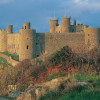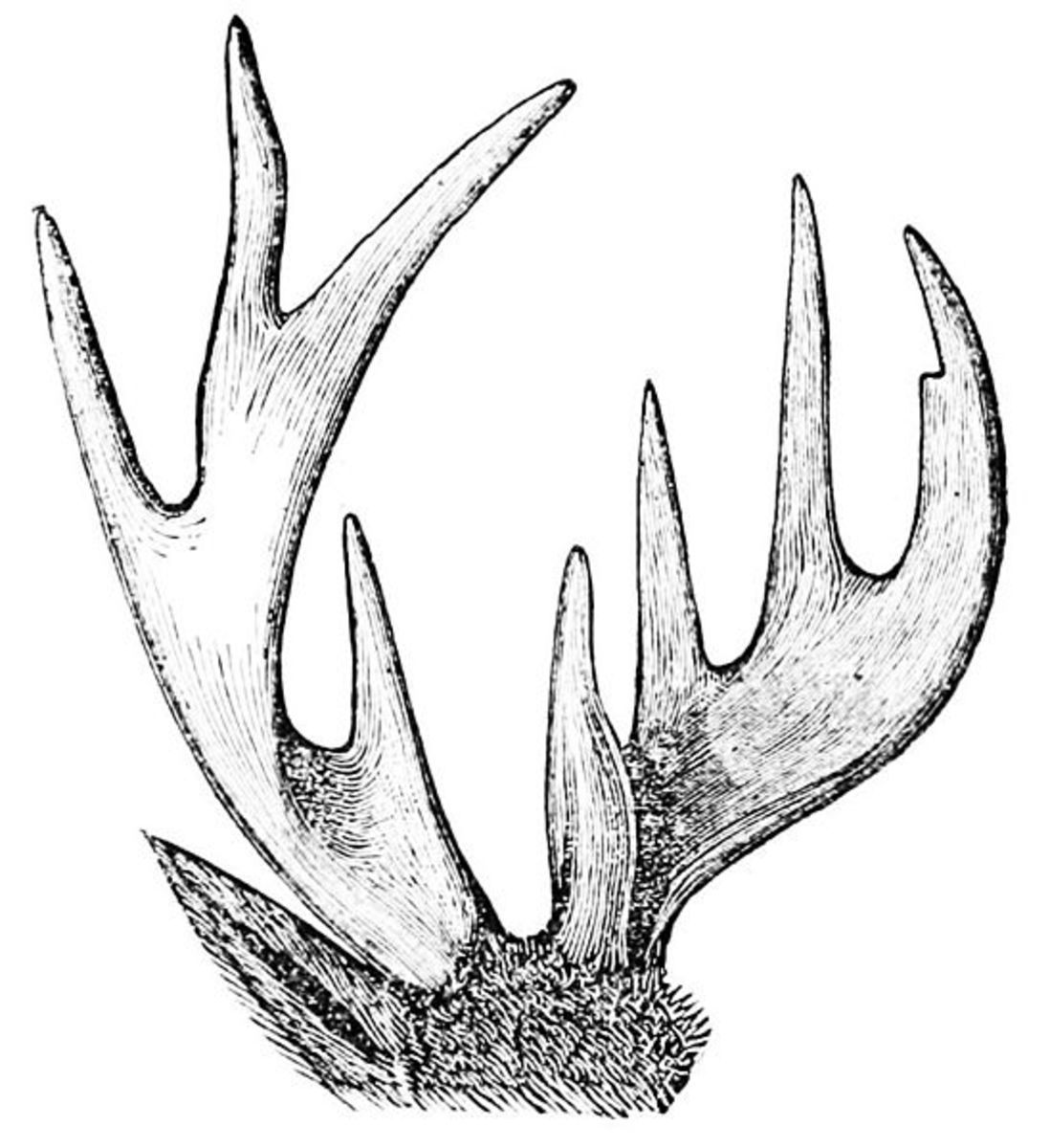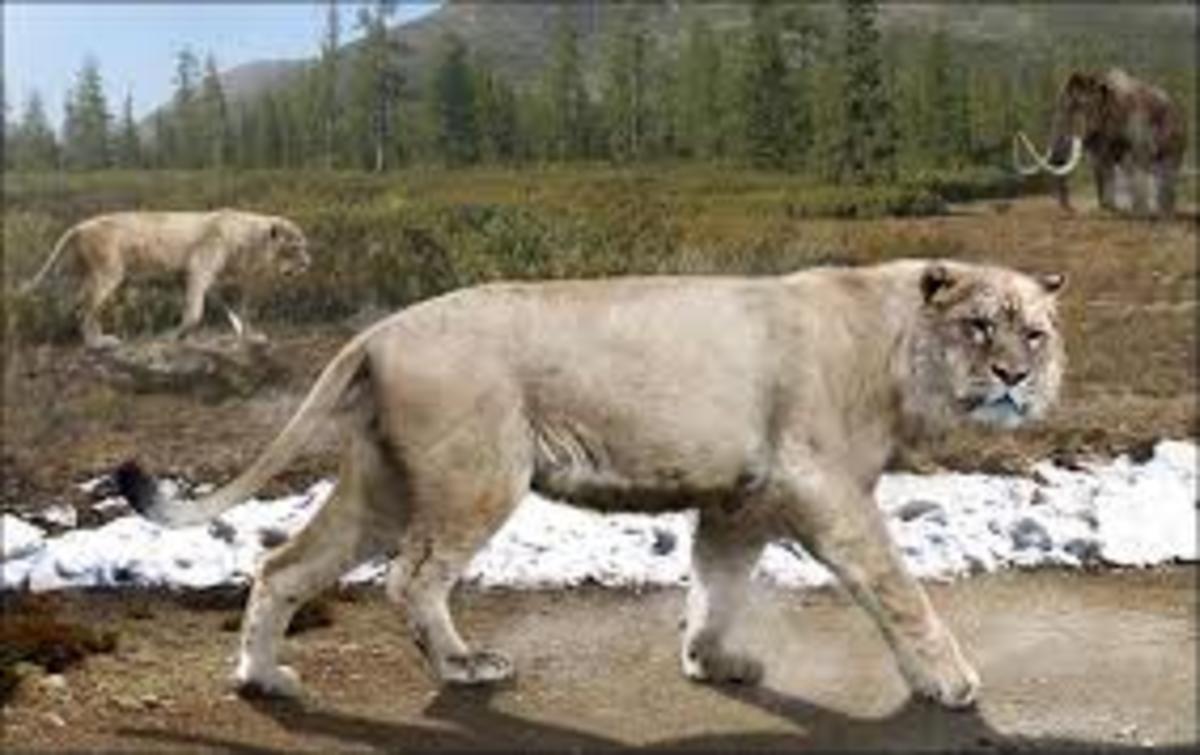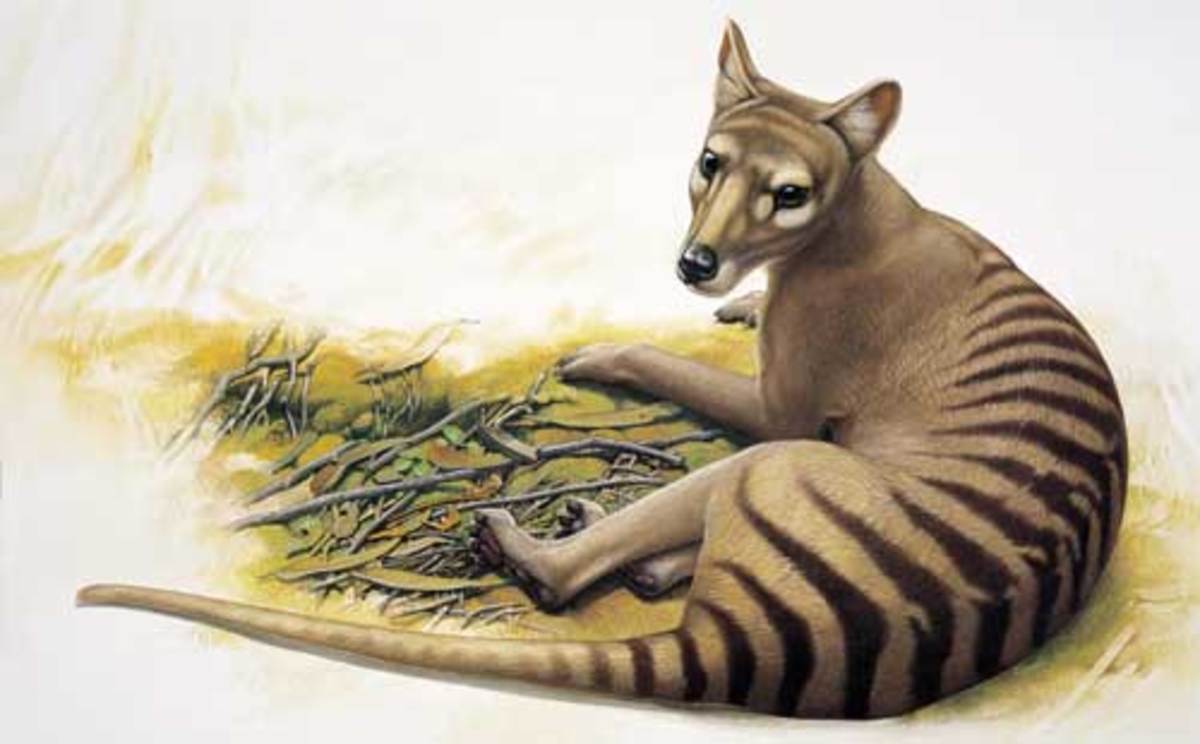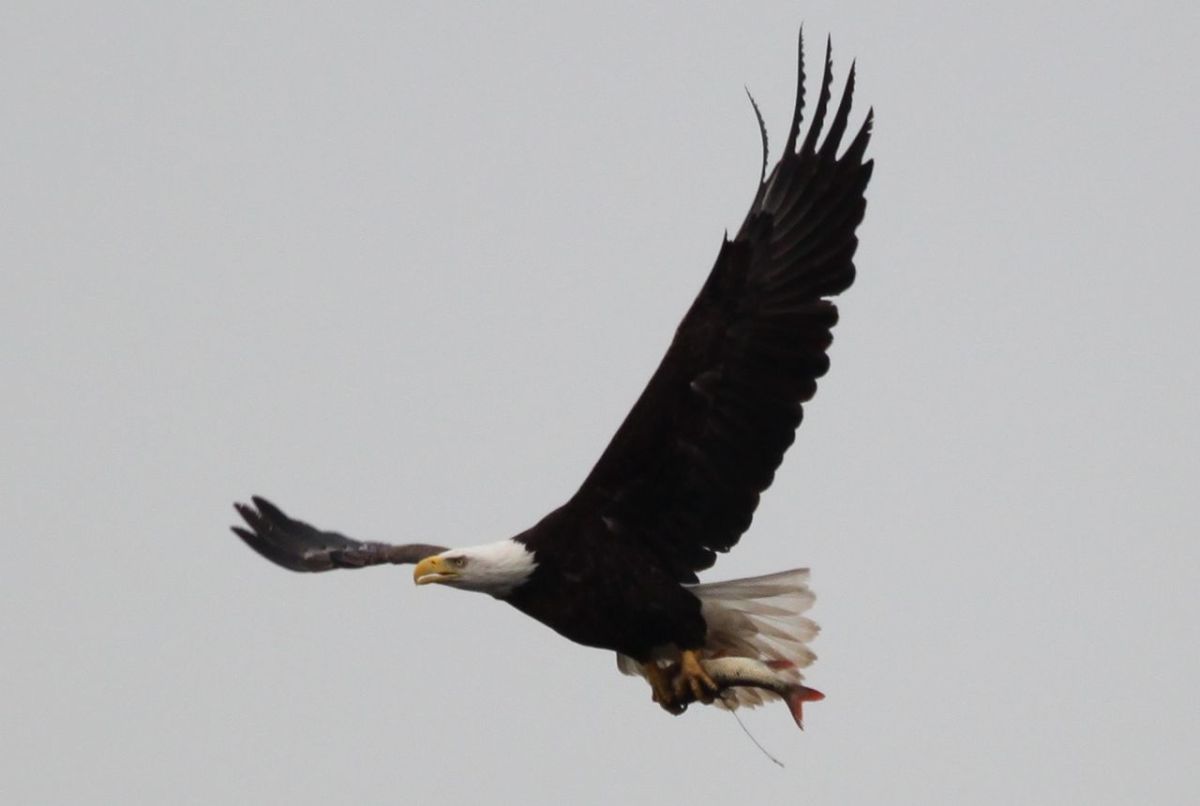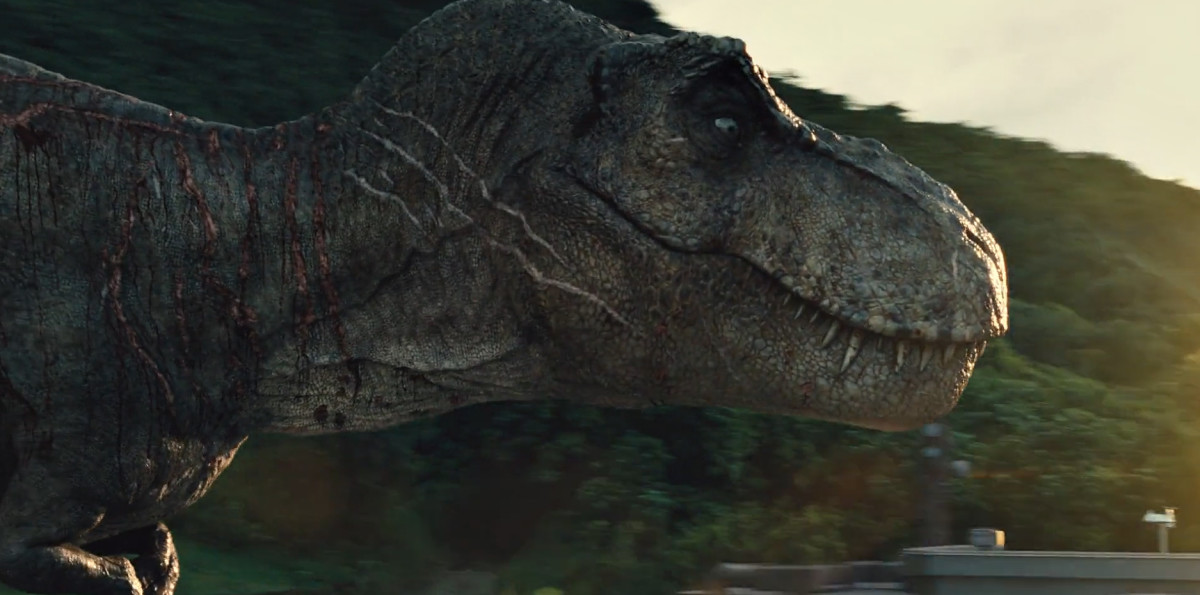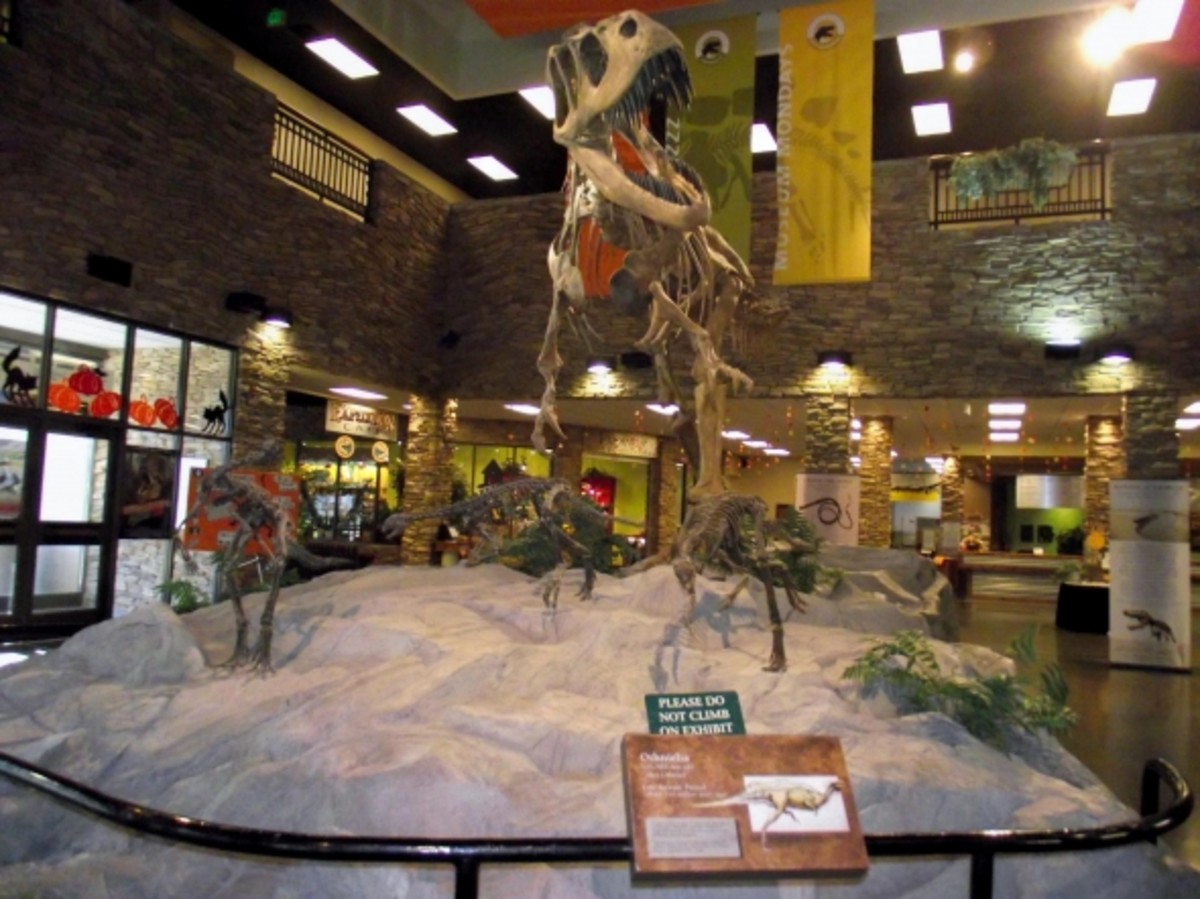Ice Age Animals
What an experience it would be to have one short twenty-four hour period of time to travel into the past and see the world the way it was. Always intrigued by people and the history they've lived before us, I often wonder what period I'd most like to visit, but the fact is I don't think I'd ever be able to choose only one.
Creation? Maybe, but we have the chance to see God's creation renewed each and everyday. The birth of a baby, the flowering of a plant, birds meticulously crafting a nest, that rare meteor shower visible in the night sky. Sunrise, sunset, thunder, lightning, ever changing landscapes, and the roar of the ocean. Simple things like smiles, and yet all part of God's plan.
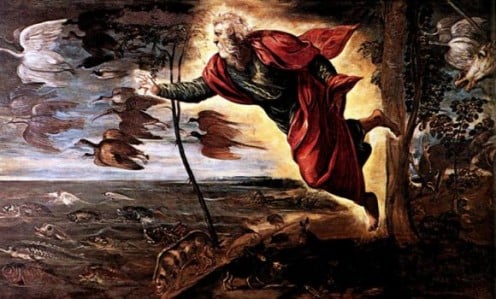
So how did God's plan begin? Prehistory? What exactly is "pre-history?" God created the Earth in seven days. How long were God's days? Did he measure time? The monsters of ancient history; did God place these creatures on the earth to teach man humility, to teach him to survive? Genesis, Chapter One gives believers an inarguable answer to this question: "God blessed them (Adam and Eve); and God said to them, 'Be fruitful and multiply, and fill the earth, and subdue it; and rule over the fish of the sea and over the birds of the sky and over every living thing that moves on the earth.'" (New American Standard Bible).
This one verse teaches us that God made man to rule over what we envision today as superhuman beasts with monstrously large teeth and claws to match, as well as majestic reptiles that yearned for nothing more than the salad provided by the creator's splendid garden buffet. That man was meant to rule over them is satisfied by the knowledge that humanity has survived where their once great numbers dwindled into extinction. Scientists don't share my beliefs, and they don't have to. Nor do I have to share theirs..............
To go back in time would mean to become prey to the beasts that roamed the world before us. Could I survive even one day? Would I find myself in the midst of Hollywood's Jurassic Park, only to become a small slice of meat on the evening menu? Would I miss all of the things I yearn to see because I'd run lickety split to the nearest place I could find to hide myself, only to be swallowed whole by the hungry vegetation I've never studied?
The world of yesterday holds more mystery than any one person is capable of imagining, and I know that if I had the chance to visit, the things I'd like to see would be the moving, breathing animals we read about in our history books. The furry animals, you know, the ultra large versions of the animals we see today. The giant cats slinking through the tundra; the supersized elephant of yesterday sporting matted hair and unimaginable tusks; the animals that if I had them within close enough proximity (and muzzled), I'd like to scratch behind the ears. But enough of that............ let's meet them.
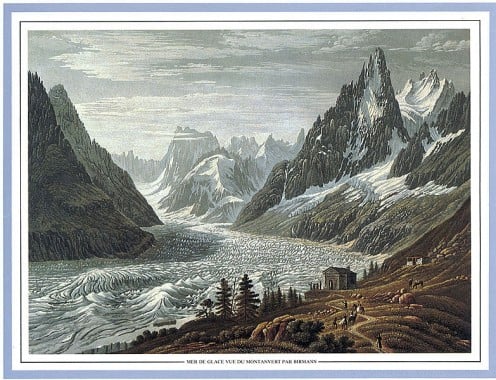
The Ice Age
The Earth has experienced many changes since its creation. One of these changes is known as the "ice age," a period of time in which large portions of the world were buried under massive sheets of ice. Some of these ice sheets are believed to have been hundreds of feet deep, and during the coldest times, approximately one third of the Earth's land was blanketed beneath the frosty layer.
During the Ice Age; North America, Europe, and Asia were home to the enormous glaciers that rose up like mountains on the horizon. These large rivers of ice slowly moved downhill grinding away at the landscape, crushing soil and rocks, using their immense weight to mold the land beneath them. Many of these glaciers would have made the tallest buildings in existence today seem small in comparison.The layers of packed ice beneath them are believed to have measured more than a mile deep.
Animals of the Ice Age battled daily for survival. Seasonal changes and slightly warmer weather during the summer months would melt the ice and bring forth streams to feed surviving plant life. Many plants were buried in the snow; the flowing water helped them grow again, and the animals that needed them for nourishment were afforded the chance to survive just a little longer.
Many animals escaped the cold and ice by migrating to areas with warmer climates. They traveled long distances, trekking across what was sometimes treacherous terrain. Their path was carefully chosen by instinct and a desire for survival; they followed their noses, as it were.
The creatures who chose not to make the journey found other accommodations. They made do with what they had. Movements of glaciers had not only carved paths through the land; they'd carved out areas in the hills and cliffs as well. The result of those natural carvings were caves, and the caves provided shelter and protection for the animals who made them home.
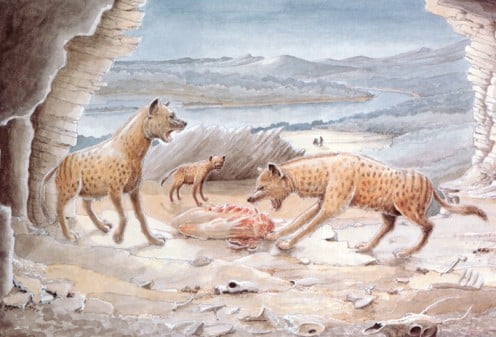
Hyena
Today, hyenas are only found in Africa. Unless of course, you visit them at the local zoo. But thousands of years ago hyenas could have been found wandering through much of the European countryside and living within many of Europe's finest caves.
Caves sheltered newborn litters and gave the hyena somewhere to feast on a fresh kill. Hyenas both lived, hunted, and traveled as packs.
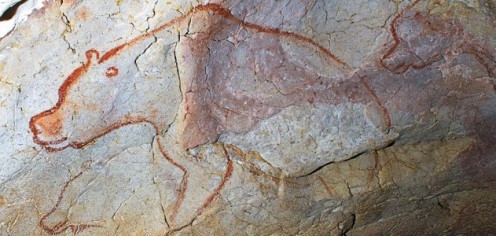
Cave Bear
Another cave dweller was the Ursus-spelaeus, better known as the "cave bear." Standing seven feet tall, the cave bear would have been extremely intimidating. Think about the grizzly bear............. he might stand over three meters tall and weigh in at more than one thousand pounds............... the cave bear; he was bigger!
Cave bears lived throughout much of Europe, and like the hyenas, they lived in groups. The remains of more than 100,000 cave bears have been found in caves throughout Europe, most notably in Austria.
It is believed that the cave bears were vegetarians, and information gathered from the study of their remains has concluded that a good many of the bears died during hibernation. Signs of sickness and disease were evident in studies that were performed on specimens of all ages. By the end of the Ice Age, these bears had disappeared.
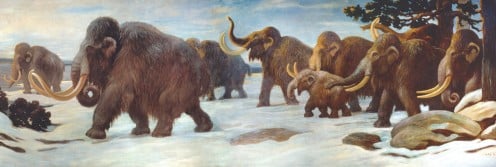
The "Woolly Mammoth
The best known animal of the ice age, and my own personal favorite, would be the woolly mammoth. The name mammoth, derived from an old Siberian word, means "earth burrower."
When originally given its name, the mammoth was not thought to be an ancient, long extinct, prehistoric creature. Instead, it was believed to have been an underworld beast, something that lived underground in a burrow, never to surface because the open air would mean certain death. The mammoth was likened to a mole. Needless to say, those initial observations were incorrect.
Far from creatures who burrowed beneath the earth's surface, these "giants" stood more than nine feet tall at the shoulder and sported huge, curving tusks. Tusks were essential tools that allowed the mammoth to sweep aside snow and dig for the food buried beneath it; they were also useful during the mating season when the male mammoths busied themselves with fighting over the women.
The woolly mammoth was covered with long, shaggy hair that could reach three feet in length; thus its name. But the woolly mammoth needed far more than a coat of shaggy hair to keep warm in the ice age environment; he actually sported not just one, but three coats of fur.
The woolly mammoth's outer coat was very coarse and very long. Underneath that wooly layer was a thinner, shorter underfur that measured ten to twelve inches and provided extra protection. A mammoth's third layer of fur was its undercoat, a thick layer of wool next to the skin. Although this layer only measured one to three inches, it may have been the most important as it provided necessary warmth in an unfriendly environment. Further insulation was provided by four inches of fat located just beneath the mammoth's skin. In other words............. he was always ready to go out and play; no jacket required.
Mammoths originated in Africa but eventually they migrated to far away places, and took up residence in North America, Europe, and Asia. They traveled in herds searching for plants. Moss, grasses, herbs, and ferns were favorites. It is said that they consumed an average of 300 pounds of vegetation per day; now that's a big salad! Plants were pulled from the ground by the mammoth's trunk which served as a very strong, very flexible, and extremely handy appendage. The mammoth's trunk allowed it to feel and grasp for things. We are able to observe similar movements in the modern day elephant.
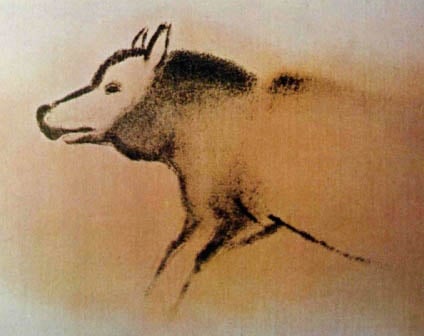
Surprisingly, they say that outside of humans hunting for food, the mammoth's most active predator was the wolf. It was during this period that the now extinct Dire Wolf roamed the world, specifically in North America. Large concentrations of fossilized remains have been found throughout California and Florida. The large numbers of fossils in these areas are attributed to their excellent conditions for preservation.
Packs of hungry wolves would stalk the herd and choose its weakest member; then they'd give chase, tiring the animal to the point they could surround and bring it down. Dire wolves differ from the wolves we know today in that they were much larger, had sharper teeth and stronger jaws (perfect for crushing bones), shorter, stronger legs, and smaller brains. Seeing that the grey wolf migrated over the land bridge of Berengia some years after the dire wolf; I have to wonder if intelligence had anything to do with the survival of one and the extinction of the other. Maybe someday we'll find out.
Early cave art contains many depictions of the woolly mammoth. Most of these works have been found in the caves discovered in France and Spain. They are believed to be thousands of years old.
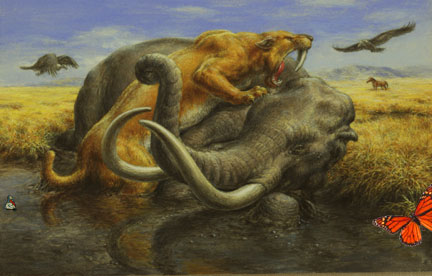
Sabre Tooth Tiger
It isn't difficult to understand how the saber-toothed tiger got its name. Their large front teeth were razor sharp and shaped liked the sabers (swords) we see on film and in museums. Many variations of the saber-toothed cats stalked their way through most every continent on the planet before their eventual descent into extinction.
Growing to more than nine feet in length, the saber-tooth tiger was far larger than the tigers we know today. They boasted powerful front legs and shoulders, extremely large jaws that had the ability to open to an angle of over 120 degrees, and fangs measuring up to 10 inches long. Not one to waste time, the saber-tooth tiger aimed to kill its prey by penetrating the soft folds of its neck.
As strong as they were, the saber-tooth tiger didn't always have it easy. Their prey was often bigger, stronger, and more than ready to fight back. Brittle teeth were one of this big cat's weaknesses; missing their mark and connecting with bone would often result in broken teeth. Scientists believe that many a tooth was fractured while attacking the belly of another beast and hitting the ribs of their prey. The saber-tooth cats were intimidating and a force to be reckoned with, but they were not invincible.
La Brea Tar Pits
The La Brea tar pits in California were a death trap for many ice age animals, and many of the remains that have been excavated from the site are both complete and intact. Entrapment in the sticky tar would have made for a slow and agonizing death in its own right, but to be eaten alive by predators such as the saber-tooth while sinking into the ooze and stench must have made that slow death even more unbearable. I wonder if it would have given the animals any sense of justice to know that the predators who attacked them at their weakest usually followed them into the abyss. The tar pits didn't pick and choose; everything was fair game, and everything was devoured whole.
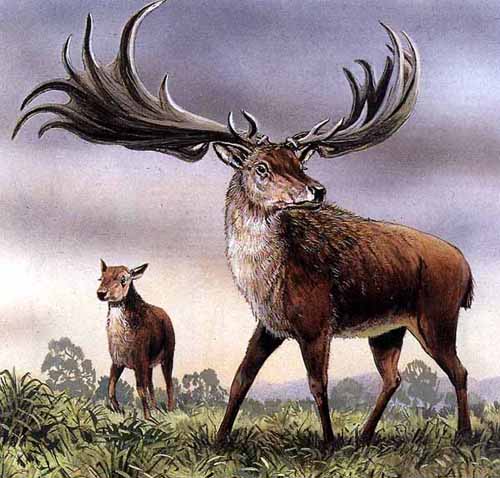
Megaloceros
To sight a Megaloceros would be any modern day hunter's dream. Making their homes in Europe and in sections of Central Asia, the Megaloceros boasted the largest antlers of any deer that has ever existed. During the growing season, the male deer's antlers would grow at a rate of a quarter inch per day. By the end of the season their crown would span an approximate length of nine feet.
These immense antlers were a source of pride and a sign of vigor. As the end of the growing season marked the transition into the mating season, these deer would become combatants in contests that would require both strength and endurance. Large males show evidence of having weighed in at up to 1,540 pounds, with 80 of those pounds carried on the tops of their heads. Their prize was the right to mate. Shortly after mating, the females would go off to live on their own, and the males would do the same.
For the male, the end of the season was marked by the loss of his antlers; they simply fell off, leaving the male a bit lighter and affording him the necessary agility he needed to move about during the harsh winter. Come spring, his antlers would once again begin to grow aided by a diet that consisted of grass, trees, and willow shoots. Willow shoots provided the vast amounts of calcium necessary to augment the antlers growth.
Many remains of the Megaloceros have been found in the peat bogs of Ireland. Because of this, the Megaloceros is often mistakenly called the "Irish Elk." It is believed that many of these majestic animals died because the size of their antlers made it difficult to navigate through trees. Becoming entangled in the branches of their environment; having their antlers grow to such a great size that they found themselves unable to raise their heads; and malnutrition are three of the reasons given for their eventual extinction.
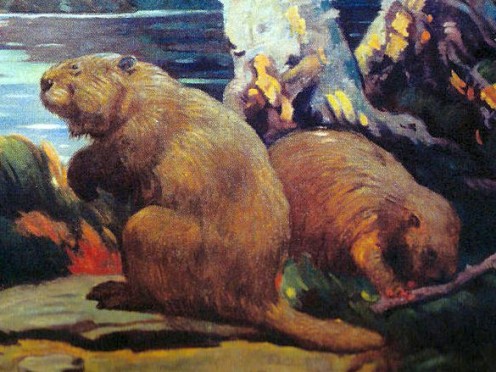
Castoroides- The Giant Beaver
Long ago, North America provided a home for the Castoroides (giant beaver). Dwelling in the lakes and forests of the continent, this very large amplification of present day beavers cut through wood with six inch teeth, grew to a length of eight feet, and could weigh up to four hundred pounds.
This ingenious rodent lived through the last ice age before becoming extinct. The cause of its demise remains unknown, as does its purpose. No one knows if the Castoroides was a "builder" like its modern day counterpart, nor do they know the reasons for its extinction. Minnesota proudly embraces the Castoroides as their state fossil.
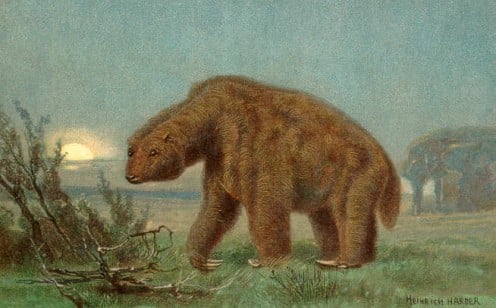
Before the Earth's plates shifted, joining the South and North American continents, South America was an island. While much of the world struggled with the ice and bitter temperatures, its region was more temperate than others.
South America's habitat provided homes for many species that lived nowhere else in the world. After the eventual joining of the North and South American continents, at a small stretch of land called the Isthmus of Panama, the animals of the two continents began to move freely between the two. Opossums, sloths, and armadillos trekked northward, while animals like mice, wolves, bears and squirrels made their way south.
The Megatherium, or giant sloth, was the largest of its species. Measuring up to nineteen feet long from the top of their heads to the tips of their tails, they didn't hang from trees like their distant relatives in today's rain forests.
Walking on the knuckles of their front paws, they used their tails for balance when plucking tasty morsels from the trees. And if they couldn't reach them at their full standing height of twenty feet, they'd simple break the branches down. At a full weight of five tons, I can only imagine how much food they'd eat per day, and I'd guess there were many broken branches left behind from their foraging.
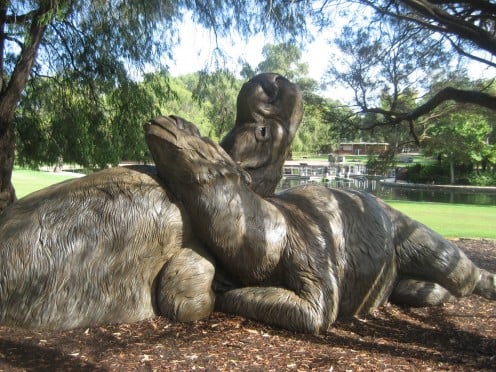
Australia's ice age mammals are said to be all marsupials (animals that both feed and care for their young ones in a pouch). Likened to a present day hippo, the largest marsupial was the wombat-like Diprotodon, a vegetarian. Tipping the scales at more than two tons, many wombat remains have been discovered in deep mud. Footprints have concluded that like the wombat, the Diprotodon's front feet turned inward, mistakenly giving the impression it was pigeon toed. Large claws are believed to have enabled the Diprotodon to dig up the roots of plants. It is presumed that many of these mammals became trapped in the mud while trying to reach for foliage.
Another of Australia's ice age animals is a distant relative to the red kangaroo. The Procoptodon, also known as the "mega-roo," was twice the size of its present day family member. Standing approximately ten feet tall and weighing nearly five hundred pounds, the Procoptodon could move (hop) at speeds around 30 mph. The Procoptodon fed on grass and bushes, living much as the newer, smaller kangaroos do today.
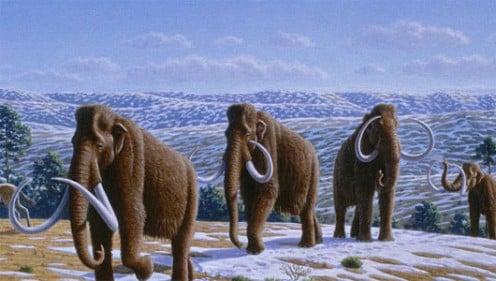
After the ice age came to an end, most creatures found life easier. The bitter cold slowly gave in to more temperate climates, vegetation was able to grow and spread unhindered, and the migrations of man and beast spread out over the globe.
Many ice age animals didn't live through this new change. All of the animals mentioned above eventually disappeared from the landscape. Archaeological discoveries have unearthed and supplied us with a glimpse into the past. Without them we would not be aware that these enormous versions of today's animals once lived.
© 2014 Awdur
